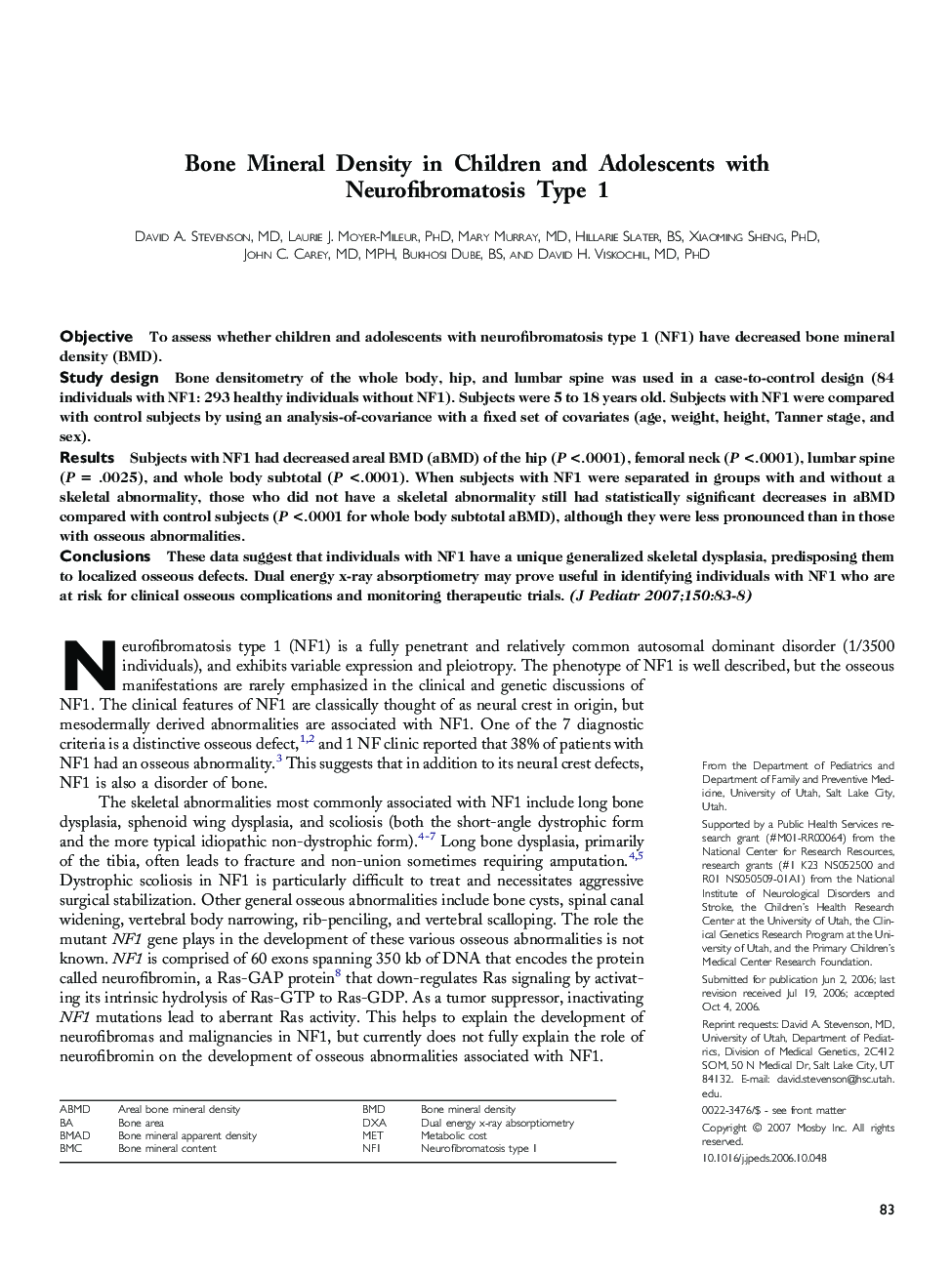| Article ID | Journal | Published Year | Pages | File Type |
|---|---|---|---|---|
| 4168914 | The Journal of Pediatrics | 2007 | 6 Pages |
ObjectiveTo assess whether children and adolescents with neurofibromatosis type 1 (NF1) have decreased bone mineral density (BMD).Study designBone densitometry of the whole body, hip, and lumbar spine was used in a case-to-control design (84 individuals with NF1: 293 healthy individuals without NF1). Subjects were 5 to 18 years old. Subjects with NF1 were compared with control subjects by using an analysis-of-covariance with a fixed set of covariates (age, weight, height, Tanner stage, and sex).ResultsSubjects with NF1 had decreased areal BMD (aBMD) of the hip (P <.0001), femoral neck (P <.0001), lumbar spine (P = .0025), and whole body subtotal (P <.0001). When subjects with NF1 were separated in groups with and without a skeletal abnormality, those who did not have a skeletal abnormality still had statistically significant decreases in aBMD compared with control subjects (P <.0001 for whole body subtotal aBMD), although they were less pronounced than in those with osseous abnormalities.ConclusionsThese data suggest that individuals with NF1 have a unique generalized skeletal dysplasia, predisposing them to localized osseous defects. Dual energy x-ray absorptiometry may prove useful in identifying individuals with NF1 who are at risk for clinical osseous complications and monitoring therapeutic trials.
